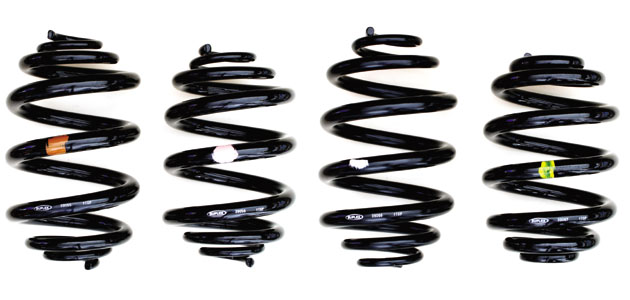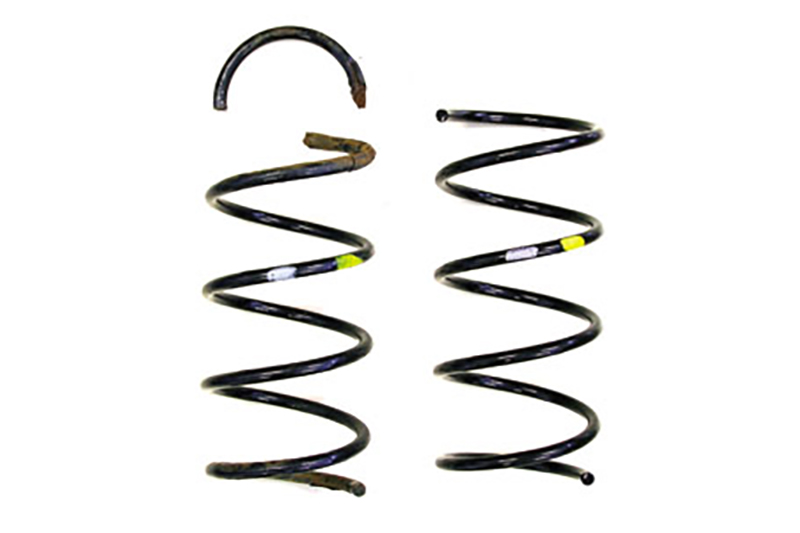
Today, a car’s bodywork can be ordered in almost any colour the customer desires but the coilsprings underneath, almost without exception, are still black. Except, that is, for the splashes of colour that usually only mechanics see when they replace tired or broken springs in the workshop.
Why do VMs apply colour codes to their springs? The obvious, and correct answer, is for identification purposes. Coilspring geometry – wire diameter and the number of coils especially – has a major effect on spring rate (strength) and, because relatively small variations in either are difficult to spot with the naked eye, VMs ensure that the springs fitted at the factory can be easily and reliably identified by the workers assembling the cars.
A particular model of car, depending on engine, transmission, suspension type and the level of options fitted, will require a particular spring chosen from a family of springs designed for that model or, more likely, for that platform. VMs use highly-visible colour codes to differentiate between optically similar designs within the same family of springs.
Find the correct part
Some VMs link the colour code on the spring directly to the OE part number and this information can assist the mechanic when ordering replacement springs. Examples of this are Audi, Volkswagen, Skoda, Seat, Renault, Dacia, Mercedes-Benz and, in the past, Rover. Good aftermarket spring suppliers will show colour code information in their catalogue where this assists in identifying the correct part.
Coil-spring replacement, especially on a MacPherson strut suspension, is a labour-intensive and potentially hazardous task and good mechanics will want to ensure they have sourced the correct replacement parts before proceeding with the repair. In most cases, a quick glance under the front wing will provide all the information a mechanic needs to pre-order the correct part!
Other reasons for using colour
The individual mechanical components that, once assembled, form major units of the car, will only function correctly as a whole if they have been manufactured to lie within a tolerance band determined by the VMs. Various geometrical features of the coil-spring are subject to a tolerance: the number of coils, the wire diameter, the spring free length and the inside diameter of the last coil where it locates on the spring seat, are perhaps the most obvious. But it is the tolerance on load at a given length, typically the compressed length of the spring at the vehicle ride-height condition, that determines whether two coilsprings having the same part number will cause ride-height problems or result in the car leaning to one side after fitting. It is for this reason that some OE coil-springs carry an additional colour code that identifies it as being slightly “too weak” or slightly “too strong” but, in either case, still within the manufacturing tolerance for that part.
Good examples of VMs that have used colour codes in this way are Mercedes-Benz, Rover and Hyundai/Kia. Here, a single colour code applied on the coil adjacent to the coil carrying the colour code that links to the OE part number allows the vehicle production line worker to match springs within the same tolerance band before fitting them to the vehicle. This ensures the vehicle ride-height is tuned to the finest possible degree before the car leaves the factory. It is rare to find tolerance codes of this type on springs supplied in the aftermarket, a major reason being the industry’s inability to guarantee the mechanic will always fit replacement springs in axle pairs, something that all VMs recommend to restore the balance of the car.
Alpha-numeric codes
One or two VMs – Vauxhall (GM) and BMW for example – have supplanted colour codes with alpha-numeric codes which again have a direct link to the OE part number and can be useful when ordering replacement parts.
But beware! Some VMs apply colour codes to springs which have no direct link to the OE part no. and which may, for example, indicate nothing more than the particular factory in which the spring has been manufactured. In these cases the colour code is of little use to the mechanic and should be ignored.
RENAULT
Ordering replacements by colour code ensures a perfect fit every time.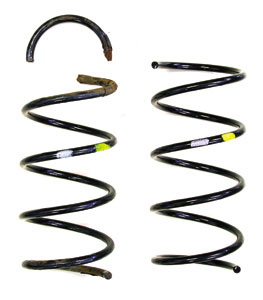

HYUNDAI
The green and white code offers a direct link to the OE part no. The purple code is a tolerance code.
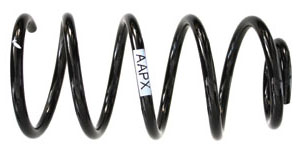
VAUXHALL
Alpha-numeric codes are becoming more popular and are linked directly to the OE part no.
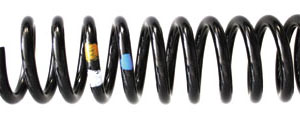
MERCEDES-BENZ
The white and yellow code offers a direct link to the OE part no. The blue code is a tolerance code.
VOLKSWAGEN
Transporter colour code information is an additional tool in the box to make sure the correct replacements are ordered.